Real Moms, Real Kids: English Language Learners
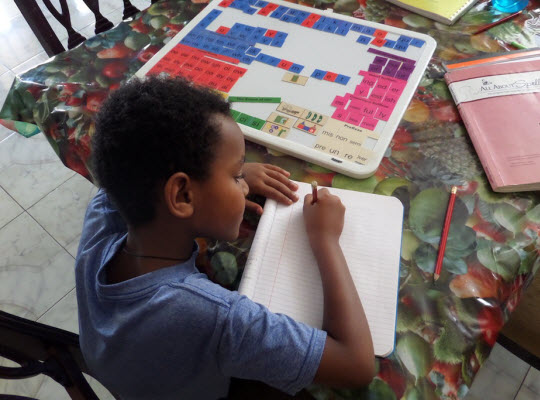
Teaching children to read can be difficult under the best of circumstances. But just imagine the challenge of teaching a child whose first language is not English.
This is the challenge that Karen* faces as she homeschools her children. Karen’s children are “English language learners,” (also known as “second language learners”).
An English language learner, or ELL child, may have a difficult time communicating fluently in English. ELLs often require specialized instruction in the English language and other school-work.
Karen has been using All About Reading and All About Spelling to teach reading and spelling to her two boys. She generously shared their story with us.
Here’s Karen…

My children are second language learners. Our sons have been in our home since October 2013. We live in Ethiopia, so they have never lived in the United States long-term. In 2014, we visited for five months and are currently here for a short-term stay. We speak English in our family most of the time, but the boys are still very much immersed in their birth language.
We began using AAR and AAS in February 2015. My older son completed AAR levels 2-4 in one year and AAS levels 1-4 in 16 months. My younger son completed the first three AAR levels in one year and the first three spelling levels in 16 months. Both programs helped my children differentiate and identify sounds in the English language. I’m a speech therapist, so I was able to give my kids placement cues and talk to them about the difference in sounds and how they are made in the mouth. This helped a lot with phoneme discrimination and articulation. I didn’t use the phonogram app because of my experience and training, but this would be a huge help for other English language learners.
The programs also support vocabulary building and problem solving. One of my sons is a very visual learner, and my other son needs to know why things are the way they are in order for him to understand them. But despite their differences, the programs are perfect for both of them.
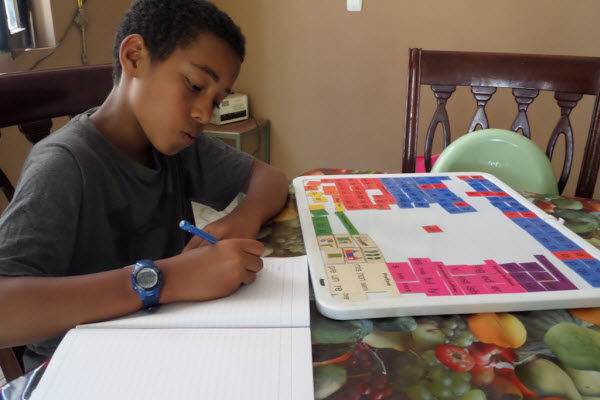
Why AAR and AAS Are Effective for English Language Learners
- I love that the programs are not grade-level-specific. This allows you to move through them at the speed that feels most comfortable for you and your child, without the pressure of feeling like you have to finish the curriculum.
- My kids love the magnetic tiles and multisensory approach.
- The pictures in the readers facilitate comprehension. They are simple but still very appealing.
- My children love that they can see their own progress, which both motivates them and gives them confidence.
- The books are not over-stimulating, and the content of the text is very clear, which is especially helpful for my ELL children.
- My children love completing a book and moving on to the next one.
- I love how AAS and AAR have equipped my children with the tools they need to decode or construct any word.
The programs have helped develop my sons’ problem-solving skills. It is wonderful to watch as they talk out loud to themselves and reason out the ways in which they should spell a word. While reading, I never have to tell them what a word says, but can remind them of simple rules or ask them certain questions about a rule, enabling them to successfully decode a word.
My seven-year-old is a visual learner and can often remember a word after reading it just one time. He is ready for All About Reading Level 4, but is not ready for the level of comprehension it requires. I may go ahead and complete the level with him for the sake of building his fluency, but may supplement with other literature to build his comprehension, understanding, and language skills.

What Makes All About Reading and All About Spelling Different?
These programs are so very different from many other spelling and reading programs, as a child does not have to rely on memorizing individual words in order to decode or spell them.
If your child is gifted at memorizing words, then this program will fit your child and you can move at a faster pace. But if your child has difficulty memorizing words, it gives your child the tools he or she needs to understand how different letters and sounds fit together in order to be a successful reader and speller. It also enables the instructor to quickly see the “holes” where your child might be struggling.
I have a child with each of these learning styles, and they are both thriving. My children LOVE to read AND write because of All About Reading and All About Spelling!
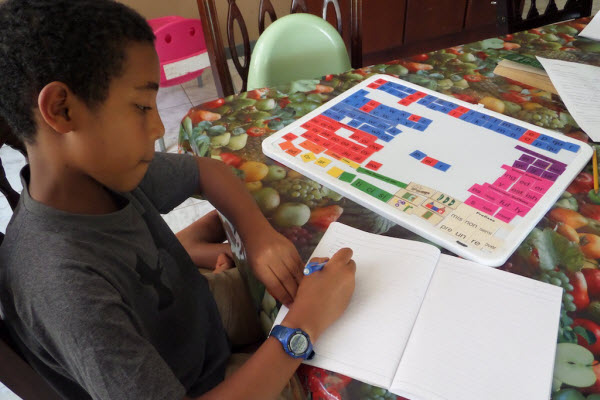
Oh … and did I mention that I am also using AAS with an adult friend who is learning English as a second language? She is thriving in all the same ways that my children are!
Here’s What I Love about Karen’s Story
- I am impressed with the way that Karen focused on helping her boys differentiate and identify sounds in the English language, something that is especially important for English language learners. Although Karen was able to bypass the use of the phonogram app because of her training as a speech pathologist, other families with English language learners will find the phonogram app to be a huge asset in this area.
- Karen recognizes that each of her sons has different strengths (one is very visual and the other is more analytical), and the programs work for both of them.
- Karen isn’t caught up in “grade levels,” and instead allows her children to move through the program at their own pace.
Products Karen Used with Her English Language Learners
Did you enjoy Karen’s story? Read more stories from Real Moms and Real Kids.
Is your child an English language learner who is learning to read or spell with AAR and AAS? Check out our free report, “20 Best Tips for Teaching Reading and Spelling,” for more great tips!
_________________________
*To preserve the privacy of the children featured in this story, we did not use the family’s real names.
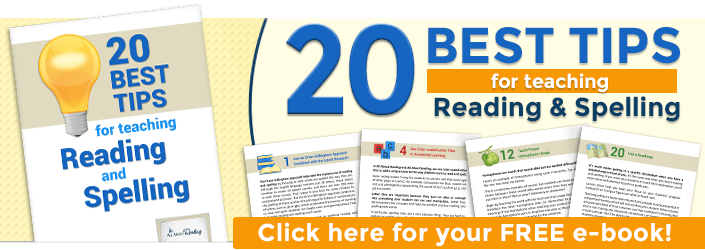




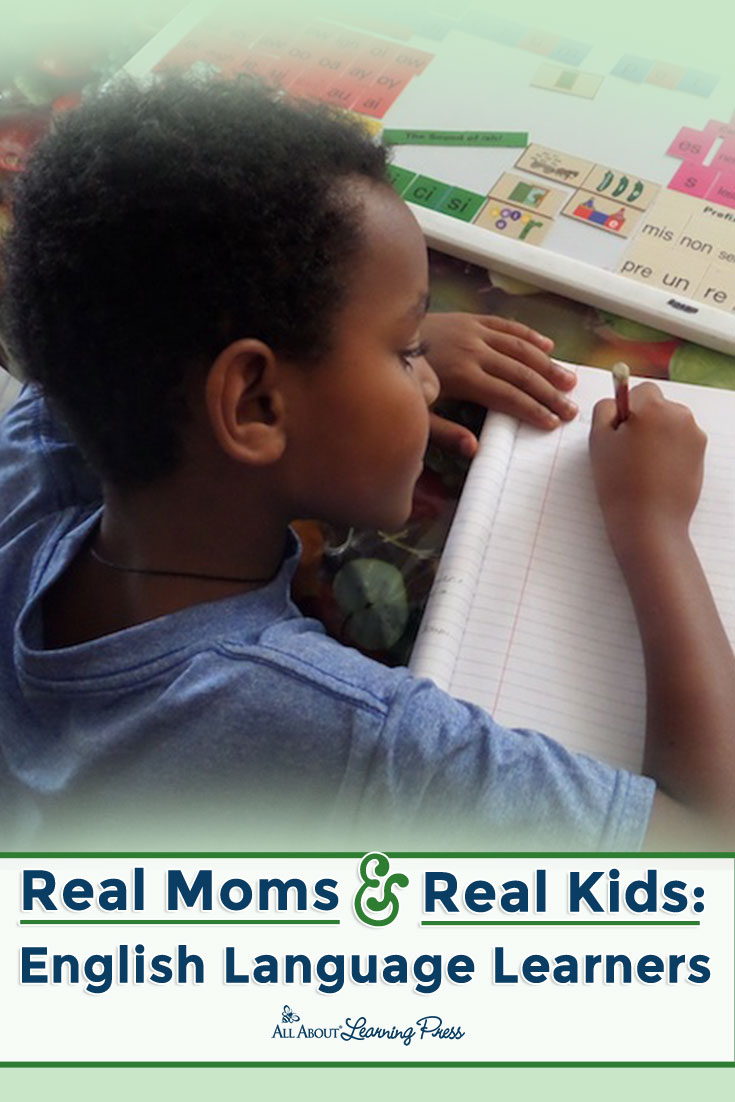






Tani
says:Thank you so much. As a mom to two kids whose primary language is English (and mine is not), this was super helpful. Excited to get my program and start using it!
Robin E.
says: Customer ServiceI’m glad this was helpful for you, Tani! You’re welcome. Let me know if you have questions about placement or anything else. I’m happy to help.
Zikhona Tefu
says:I love this. We are currently using AAS and hoping to buy AAR. To be honest, as English is not our first language, I have particularly struggled to teach phonograms A and E as they sound the same to me, but the phonogram cards have helped! So glad to be using this curriculum.
Robin E.
says: Customer ServiceZikhona,
You may find Rachel’s English helpful. She has detailed videos for helping non-native speakers learn to speak American English well. Many of the concepts also apply to British English, but some of the pronunciation will be different. Here is the direct link to her video on the short A and short E sounds.
Mother of 5
says:Our children are raised bilangual (Dutch & Arabic) and they take English as a second language. We downloaded the phonogram app but would love to use for them the AAS and AAR as well since it seems to cover spelling and reading in a very systematic way.
Robin E.
says: Customer ServiceLet us know if you have any questions, or if we can help in any way. This blog post is just one of the many great reports we have had from those teaching English as a second (or third) language.
Jeannette Hill
says:I recently spent a month teaching English in Panama. We started with teaching the sounds of the letters and used that to teach vocabulary. The Phonogram app was a very valuable resource! I hope to return next year and continue using the teaching strategies from All About Spelling. Maybe you could develop a program for ESL students?
Robin E.
says: Customer ServiceJeannette,
What wonderful work you are doing! And it’s great to hear that our phonogram app was so helpful. We don’t have any plans to develop a program specifically for English as a Second Language students, although as this blog post shows All About Reading has been successfully used for that purpose.
Anna Duran
says:We have had good success with All About Reading level II. My daughter really thrived on it and LOVED the activities.
Alina
says:I’ve been also looking at AAR/AAS as a solution for our reading and spelling learning. While our kids are bilingual, English is not my first language and I find myself with lots of ‘why?’ questions when it comes to teaching them reading or spelling.
Robin E.
says: Customer ServiceAlina,
Having “why” questions about English is common for even native English speakers! English is just a “why” kind of language.
Linda
says:This is so encouraging. I also have a visual learner who is not fluent in English.
Megan Salonga
says:This was a great post! We will be bringing our 4 year old daughter home from India! So thankful that AAR is a great program for various types of learners!
Robin E.
says: Customer ServiceMegan,
I hope that you have a very short wait before your daughter comes home!
SandieO
says:This is great for students that do not learn using traditional methods.
Christina Burns
says:Wow! I have used AAR and AAS with my own kids and have loved it. I work in a school where there are a lot of English Language Learners. I have wondered how this type of program would address their needs. Great testimonial!
Elizavel Perez
says:Very helpful read. I’ve been homeschooling my son for two years now and my daughter for one. My son went to public school from PreK through 1st grade. My daughter only went to a Prek academy then we started to do homeschool with her in kindergarten. My son was an early reader, he learned to read fast. But my daughter just started to read. I was feeling very sad and guilty because her education is my responsibility and she was not reading yet. English is my kids first language but is my second language so I need all the help I can get. I cant wait for my kids to try AAR. I would also love to win the giveaway for this month ?
Robin E.
says: Customer ServiceElizavel,
Please don’t feel bad about your daughter not reading yet! Many children are just starting to read at the end of kindergarten. You and she will do great!
Terri
says:We are just beginning AAR with my ten year old from China. She has not been home for a year yet. This has been the best program I have found so far as it is easy for her to understand ( and for me to teach) and we are able to progress faster or slower as she needs to.
Robin E.
says: Customer ServiceTerri,
I’m so glad to hear AAR is working well for you and your daughter! Thanks for letting us know.
Nancy Gardner
says:I can’t wait for my child to experience your program.
Amy Meyers
says:Very interesting read, especially as I’m a missionary in Africa!
Sherica Jordan
says:I love this reading program! I will begin using the pre-reading level with my son in September after his 3rd birthday.
Rhonda Bierl
says:My sons love AAS! They love having the letters attack each other when the spell words! My 6 year old cannot wait to start spelling in the fall.
Robin E.
says: Customer ServiceRhonda,
From what we hear, lots of kids like to play with the letters by making sound effects, little letter wars, having the words explode, and so on. Makes me smile every time I hear about it!
Yvette
says:My son is almost thru level 1. We are excited to begin level 2 :).
Vicki Eden
says:I’m very excited to try out this program for both of my children. This is our 2nd year with homeschooling (k & 1st grade), but this year I decided to try something new for us. Thank you for giving me peace of mind that all the major components will be covered for my kids.
Julia
says:I hVe a 13 and 15 year old that just came home from Ethiopia- is this complicated to learn to teach- I am also home schooling two fourth and two fifth graders.
I have never used these curricula and Im nervous to navigate it for my new kids. How long are the daily lessons? What do I need?
Robin E.
says: Customer ServiceJulia,
All About Reading is designed to be easy to use by parents and teachers with no previous experience. After the initial set up (20 to 30 minutes of separating perforated cards and such), the program is open-and-go. Take a look at the samples. Each lesson in the Teacher’s Manual begins with telling you exactly what you will need (for example, for Lesson 19 of AAR 1 you will need pages 139-152 from the Blast Off to Reading! Activity Book and Word Cards #s 103-112).
The next section is a box titled “Before You Begin” that gives you, the teacher, an overview of what the lesson covers. This takes just a minute or two to read. After that, there is the lesson, with step by step instruction laid out for you to present to your child.
We recommend spending just 20 minutes a day, 5 days a week, on reading. This blog post, Reading: how much time should I spend?, explains this further. However, since your children are older, you may find that they prefer to work for slightly longer.
Since your children have just come from Ethiopia, they may not yet be ready for All About Reading 1. This blog post discusses Reading Readiness: The Top 5 Skills from a preschool standpoint, but it applies to older learners as well. #s 2, 3, and 4 are most likely to need developing in someone brand new to English. There is a placement test in that blog post to help you determine if they are ready for AAR 1 as well.
If you find your children aren’t ready for AAR 1, let us know and we can help you get them ready. Typically we recommend the Pre-reading level, but it will be young for your children. We can help you help them master these readiness skills.
If they are ready for AAR 1, you will need:
– a Reading Interactive Kit. The Basic Kit is necessary, and the Deluxe Kit includes some nice additions. Since you will be teaching two students, we recommend a second set of the Reader Divider Cards as well, as our individualized review system is set up through the cards.
– You will need some sort of index card box or container for each student. You can use ones you find locally, but we also sell them, Reading Review Box. Note, the Reading Review Box is part of the Deluxe Reading Interactive Kit.
– we recommend using a 2 foot by 3 foot magnetic dry erase board to store and use with our letter tiles (part of the Interactive Kit), but some families have found they prefer other options such as large (new) oil drip pans, magnetic chalkboards, and magnetic binder pages.
– You will need the All About Reading level 1 Materials Package.
– Lastly, for your second student, you will need a second set of Phonogram and Word Cards. I do not think you will need a second Activity Book, as the parts you will use the most for older students, the Warm Up Pages and Fluency Sheets, aren’t consumable. You can order just a second set of cards, without the second Activity Book, by calling our office at 715-477-1976. The price for just the AAR 1 cards is $8.
I hope this helps. Please let us know how placement goes and if you have any further questions or concerns.
Katie Krason
says:Similarly, I have found this program to be extraordinarily helpful with my daughter with severe hearing loss. In many ways, English is also a second language to her and this program allows for breaking down different and difficult sound for her to hear, differentiating parts of words (suffixes, prefixes, etc.) that prior to the program she did not distinguish, and it has been extremely useful in building her vocabulary. Her teacher of the deaf has also been impressed! Thank you AAL!
Robin E.
says: Customer ServiceKatie,
I’m excited to read this. We occasionally get inquiries about if AAR or AAS would work with children with hearing loss. It’s great to hear that it does indeed work!
Sara Beyda
says:So happy to hear your happy with the program too! I’m in the same boat,my 10 and 12 yr. old finished AAR 1-3 in 14 mo. and we will head onto level 4 and AAS in Sept. I’m sure we will have a great year of learning as this past one was very exciting and full of fast progress! They started off knowing no English at all.To see their progress and enthusiasm to read and finish workbook pages is very thrilling!Thank you Marie and all who work in your office answering my questions..and helping me along the way!
Robin E.
says: Customer ServiceSara,
This is great to hear! Thank you for sharing your children’s progress with us!
Jennifer Christensen
says:Reading is very important in leading a great life..
Natalya
says:Very interesting!
Greg
says:Learning is good